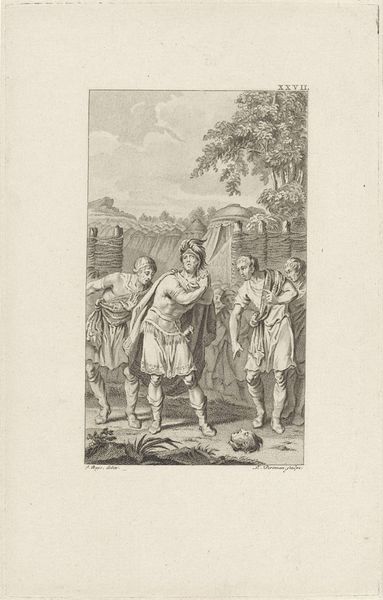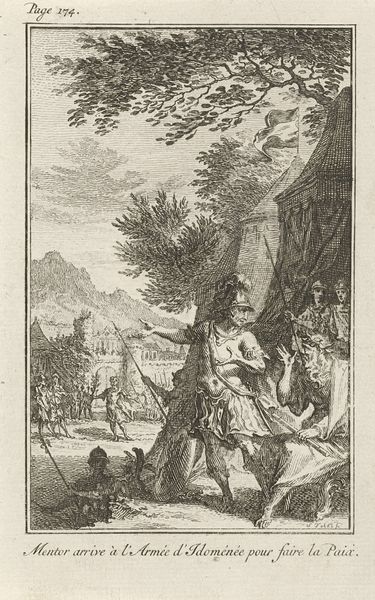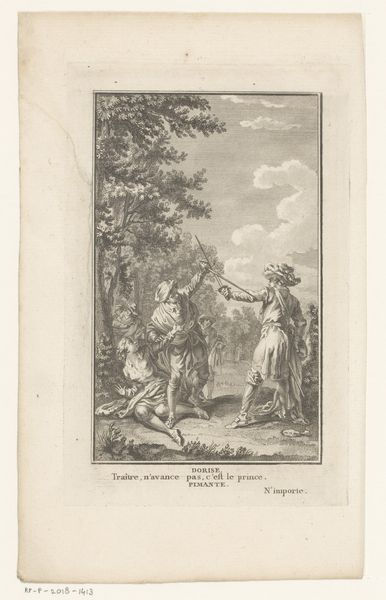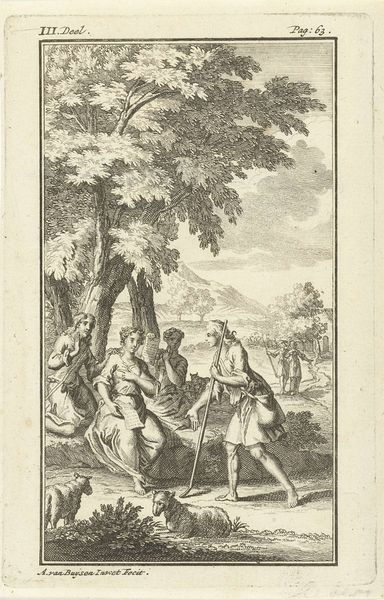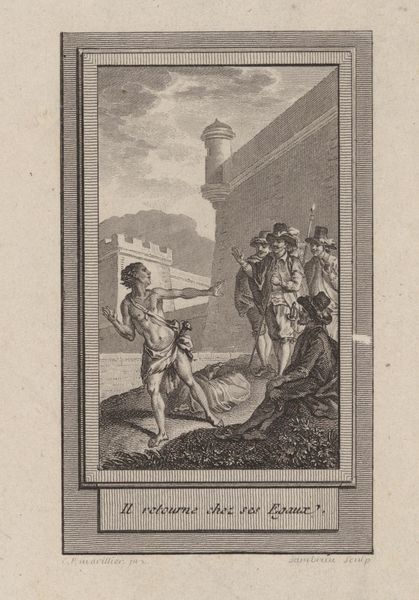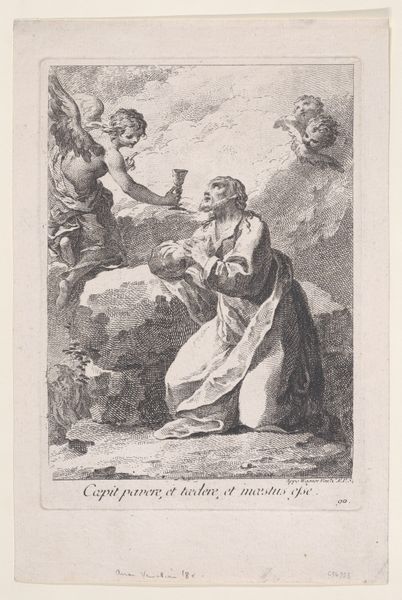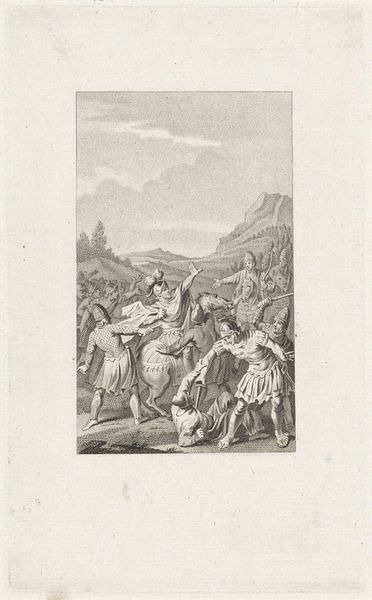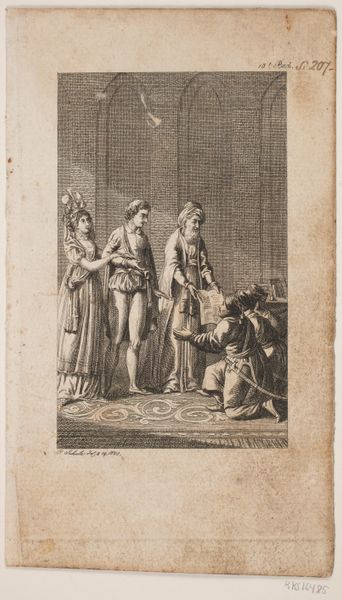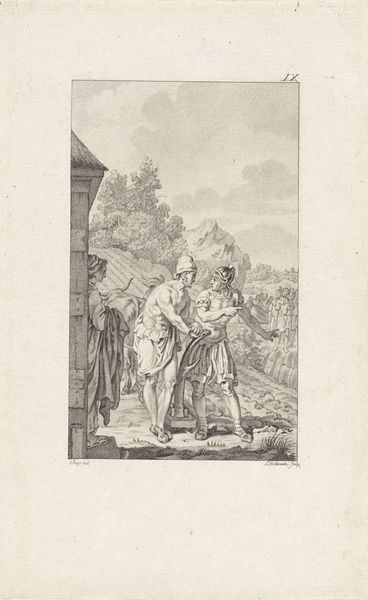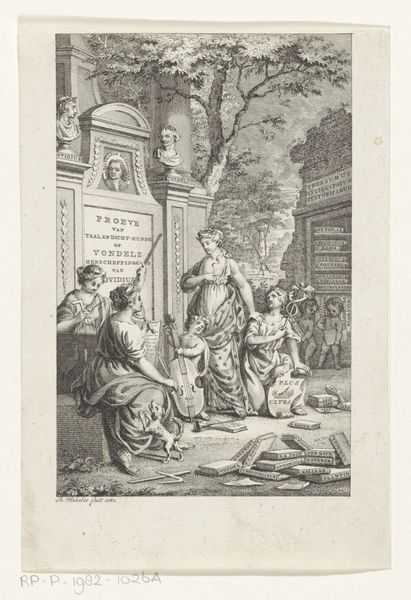
print, engraving
#
allegory
#
baroque
# print
#
pen illustration
#
old engraving style
#
landscape
#
classical-realism
#
figuration
#
line
#
history-painting
#
engraving
Dimensions: height 149 mm, width 114 mm
Copyright: Rijks Museum: Open Domain
Jacob Folkema created this print, Minerva and Telemachus Before a Temple, sometime in the 18th century. It's made with etching and engraving, processes that require skillful manipulation of metal plates to hold ink. The crisp lines and fine details you see are the result of carefully incising the image into the metal. Consider the labor involved in creating this image, and the social context. Prints like this weren't just about aesthetics, they were a means of mass communication before photography. The ability to reproduce images allowed ideas and stories to circulate widely. Folkema’s skill as a printmaker highlights the value placed on craft and technical expertise in the 1700s. It also points to the early forms of visual culture and information sharing that were emerging. The subject of the print – figures from classical mythology – connects to the history of artmaking, while the means of production, the engraving and etching, speaks to a different kind of history, one of technology, labor, and access. So next time you look at a print, remember that its meaning is embedded not only in what it depicts, but also in how it was made and how it circulated.
Comments
No comments
Be the first to comment and join the conversation on the ultimate creative platform.

